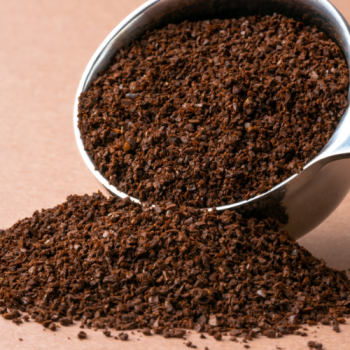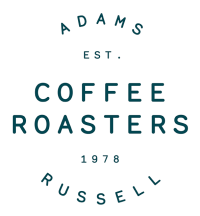The Percolator: Best Coffees, Best Practices & A Journey Through Time
- Last Updated:

The percolator is one of the oldest and most enduring methods of brewing coffee. While modern coffee machines and espresso makers have taken over in many households and cafés, the percolator remains a beloved classic for those who appreciate a strong, full-bodied brew.
This article delves into the history of the percolator, its global popularity, and the best coffee flavours suited for percolator brewing.
First though, let’s just clarify how a percolator is different to a Stove Top Espresso Maker.
The difference between a stove top and a percolator
A stovetop coffee maker (often called a Moka pot) and a percolator both brew strong coffee, but they operate differently and produce distinct flavours.
A stovetop coffee maker uses steam pressure to force hot water through ground coffee, similar to an espresso machine but at lower pressure. The result is a rich, concentrated coffee with a slightly creamy texture. This method is particularly popular in Italy and favours medium to dark roasts.
A percolator, on the other hand, continuously cycles boiling water through coffee grounds using gravity. This produces a strong, robust brew due to prolonged extraction. Percolators are ideal for brewing large quantities and are often favoured for outdoor or traditional settings.
While stovetop coffee makers offer a more refined and espresso-like taste, percolators provide a bolder coffee experience. The choice depends on personal preference and how intense you like your coffee.
Evolution of the Percolator
Percolators have undergone several transformations over the years, adapting to new technologies and consumer preferences. Early models were stovetop percolators, made of metal, typically aluminium or stainless steel. These versions required close attention to avoid over-extraction, which could result in a bitter taste.
In the 1920s and 1930s, electric percolators emerged, featuring built-in heating elements that regulated the brewing process more effectively.
By the mid-20th century, brands such as Farberware and West Bend introduced percolators with automatic shut-off mechanisms and glass knobs, allowing users to monitor the brewing process.
However, the rise of automatic drip coffee makers in the 1970s led to a decline in the percolator’s popularity.
Drip machines offered a more consistent and convenient brewing process, eliminating the risk of over-brewing. Despite this, percolators never disappeared entirely. In recent years, they have experienced a resurgence, particularly among coffee enthusiasts who appreciate their bold flavour profile.
Global Popularity Increase of the Percolator
The percolator has seen varying levels of popularity across different countries and cultures.
United States
It was once the dominant coffee brewing method in the United States before automatic drip machines took over. However, it remains a staple for campers and outdoor enthusiasts due to its rugged design and ability to function over an open flame.
United Kingdom
In the UK, tea has traditionally been the beverage of choice, but coffee culture has grown significantly. While espresso-based drinks and instant coffee are more common, percolators still have a place in households that favour a strong brew.
Italy
Italy is renowned for its espresso culture, and the Moka pot (a close cousin of the percolator) is far more popular. However, percolators can still be found in traditional households that appreciate a rich, full-bodied coffee.
Australia and New Zealand
The coffee culture in Australia and New Zealand leans towards espresso-based drinks, particularly flat whites. Nevertheless, percolators are sometimes used in rural areas and by those who prefer an intense, aromatic cup.
Nordic Countries
In countries such as Sweden, Norway, and Finland, percolators are commonly used alongside other brewing methods. These nations have some of the highest coffee consumption rates in the world, and percolated coffee is appreciated for its strength and warmth, especially during long winters. They also tend to prefer their coffee stronger than the average UK consumer.
Best Coffee Flavours for Percolator Brewing
Because of its brewing process, the percolator extracts a deeper, more pronounced coffee flavour. This makes it well-suited to certain coffee bean varieties and roast levels.
Dark Roasts
Percolators tend to bring out the bold, smoky, and chocolatey notes of dark roast beans. A French roast or Italian roast works particularly well, as these tend to have lower acidity and a full-bodied profile.
Medium-Dark Roasts
Medium-dark roasts, such as Vienna or Full City, are also excellent choices. These provide a balance of sweetness, nuttiness, and slight bitter-sweetness, which complements the percolator’s brewing style.
Single-Origin Coffees
For those who prefer a distinctive, complex flavour, single-origin beans from Colombia, Brazil, or Ethiopia are good choices. Ethiopian beans, known for their fruity and floral notes, can add an intriguing depth when percolated.
Blends
Classic breakfast blends, which often combine Central and South American beans, offer a smooth yet robust flavour that pairs well with percolation.
The History of the Percolator
The origins of the percolator can be traced back to the early 19th century. The earliest known percolation method for brewing coffee was developed by American scientist and soldier Sir Benjamin Thompson (also known as Count Rumford). However, the first recognisable coffee percolator, as we know it today, was patented in 1865 by James Nason of Franklin, Massachusetts.
A few years later, Hanson Goodrich, an Illinois-based farmer, improved upon Nason’s design in 1889 by introducing a metal filter basket and tube system. This enhancement allowed hot water to cycle through the coffee grounds repeatedly, producing a rich and robust brew.
Throughout the late 19th and early 20th centuries, percolators became the standard way of brewing coffee in households across the United States and Europe. Before the advent of automatic drip coffee makers, the percolator was the preferred brewing method, particularly due to its durability and ability to brew large quantities of coffee.
Despite the rise of modern coffee-making methods, the percolator remains a beloved piece of coffee culture, appreciated for its ability to produce a strong and full-flavoured brew. Its history spans centuries, and while its popularity has fluctuated, it continues to have a dedicated following worldwide.
For those who enjoy a bold and intense coffee experience, the percolator remains an excellent choice. Whether brewing at home, on a camping trip, or simply embracing nostalgia, this time-honoured method provides a deeply satisfying cup every time.

